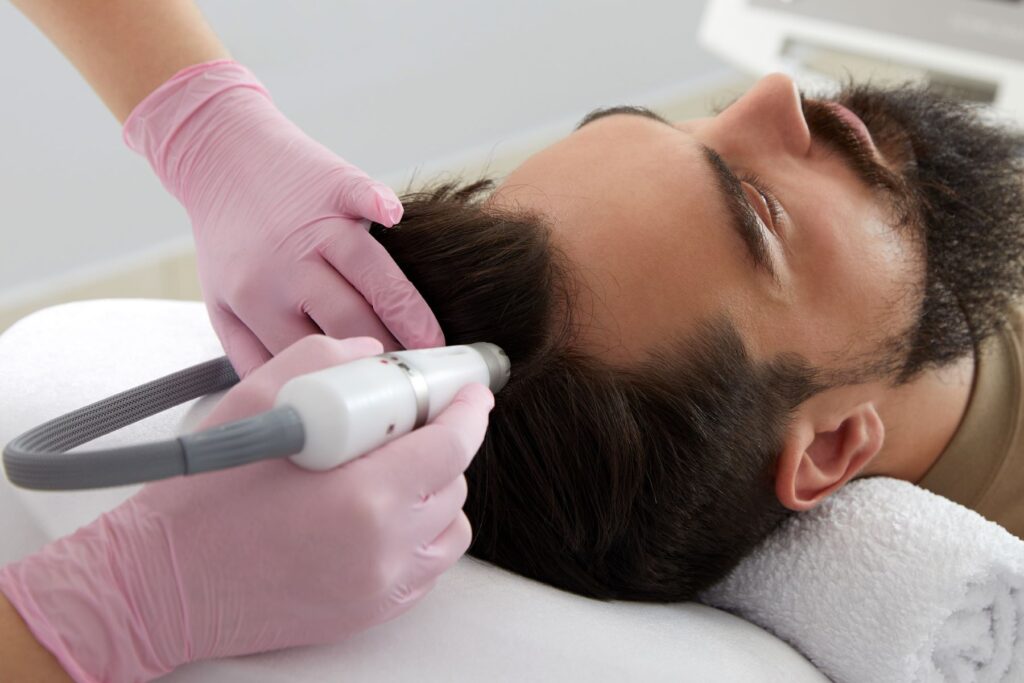Hair loss can affect anyone — men, women, and even young adults. While hair transplants are a well-known solution, not everyone wants or needs surgery. That’s where non-surgical hair loss treatment New Jersey options come in. These treatments can help slow, stop, or even reverse hair loss without going under the knife.
Table of Contents
Hair loss can affect anyone — men, women, and even young adults. While hair transplants are a well-known solution, not everyone wants or needs surgery. That’s where non-surgical hair loss treatment New Jersey options come in. These treatments can help slow, stop, or even reverse hair loss without going under the knife.
In this guide, we’ll explore the most effective non-surgical methods, what they involve, and how to choose the right hair loss doctor to help you restore both your hair and your confidence.
1. Why Consider Non-Surgical Hair Loss Treatment?
Surgical procedures like hair transplants can be expensive, require downtime, and may not be suitable for everyone. Non-surgical approaches offer:
• Less risk — no surgical incisions or stitches.
• Faster recovery — many treatments let you return to daily life immediately.
• More affordability — options to fit various budgets.
• Preventive benefits — can slow hair thinning before it becomes severe.
A qualified hair loss doctor can assess whether non-surgical options are the right fit for your specific type of hair loss.
2. Platelet Rich Plasma Hair Loss Treatment — The Natural Regenerator
One of the most promising advances in modern hair restoration is platelet rich plasma hair loss treatment (PRP).
How it works:
• Your doctor draws a small amount of your blood.
• The blood is spun in a centrifuge to isolate platelet-rich plasma.
• The PRP is injected into your scalp to stimulate hair follicles.
Why it works: Platelets contain growth factors that encourage cell repair and regeneration, which can reactivate dormant hair follicles.
Best for: Early to moderate thinning, and patients looking for a natural, drug-free option.
3. Medications That Can Help
While not new, certain FDA-approved medications remain a staple in hair loss treatment:
• Minoxidil (Rogaine): Applied topically to the scalp, it increases blood flow to hair follicles. Available over the counter.
• Finasteride (Propecia): A prescription pill for men that helps reduce hormone-related hair loss.
Pro Tip: These medications work best when started early and used consistently — stopping them often leads to a reversal of gains.
4. Low-Level Laser Therapy (LLLT) — Technology Meets Hair Care
LLLT uses red light wavelengths to stimulate hair follicles, improve circulation, and extend the growth phase of hair.
Available as:
• In-clinic treatments at a hair loss doctor’s office.
• At-home devices like laser combs or helmets.
Benefits:
• Painless and non-invasive.
• Can be used alongside PRP or medication for better results.
5. Nutritional Support and Supplements
Sometimes, hair loss is linked to nutrient deficiencies. While supplements alone aren’t a magic fix, they can support overall scalp health:
• Biotin — important for keratin production.
• Iron — low levels can trigger hair shedding.
• Vitamin D — linked to hair follicle health.
Before starting supplements, it’s wise to consult your hair loss doctor for blood tests and recommendations.
6. Scalp Micropigmentation — Instant Results Without Surgery
If regrowth isn’t possible or you want immediate results, scalp micropigmentation (SMP) offers a cosmetic solution.
What it is: A technician tattoos tiny dots on the scalp to mimic the look of hair follicles.
Benefits:
• Creates the appearance of thicker hair.
• Works for total baldness or thinning areas.
• Low maintenance once complete.
7. Combining Treatments for Better Outcomes
Often, the best non-surgical hair loss treatment isn’t just one method — it’s a combination. For example:
• PRP + Minoxidil — encourages both regrowth and prevents further loss.
• LLLT + Finasteride — helps extend hair’s growth phase while reducing hormone-driven shedding.
• PRP + Nutritional Support — strengthens hair from the inside and out.
A skilled hair loss doctor can create a customized plan based on your hair type, medical history, and goals.
8. How to Choose the Right Hair Loss Doctor
The success of your treatment often depends on the expertise of your doctor. Here’s what to look for:
• Specialization: Choose someone who focuses on hair restoration, not just general dermatology.
• Experience: Ask how many PRP sessions, LLLT treatments, or SMP procedures they’ve performed.
• Before-and-after photos: Real patient results speak louder than words.
• Transparent advice: A trustworthy doctor won’t promise unrealistic results.
9. Managing Expectations — Patience Pays Off
Non-surgical methods take time. Most people see noticeable improvements in hair loss treatment after 3–6 months, with full results often visible at 12 months. Staying consistent with appointments and at-home care is essential.
Conclusion
Hair loss can be a difficult journey, but it doesn’t have to be permanent — and it doesn’t always require surgery. From platelet rich plasma hair loss treatment to laser therapy, nutritional support, and topical medications, there are many proven non-surgical hair loss treatment options to explore.
The first step is finding a qualified hair loss doctor who understands your needs, offers a tailored plan, and guides you through the process with honesty and care. Remember, the best results often come from a combination of treatments and consistent effort over time.
With the right approach, you can slow down shedding, stimulate regrowth, and restore your confidence — all without ever stepping into an operating room. New Jersey hair loss treatment center


More Stories
The Right Plastic Surgeon and Botox Treatment in Mission Viejo CA
Saving Your Relationship: Is a Couples Intensive the Right Move for You?
How Do You Find the Best Skin Care Experts in Orange County?